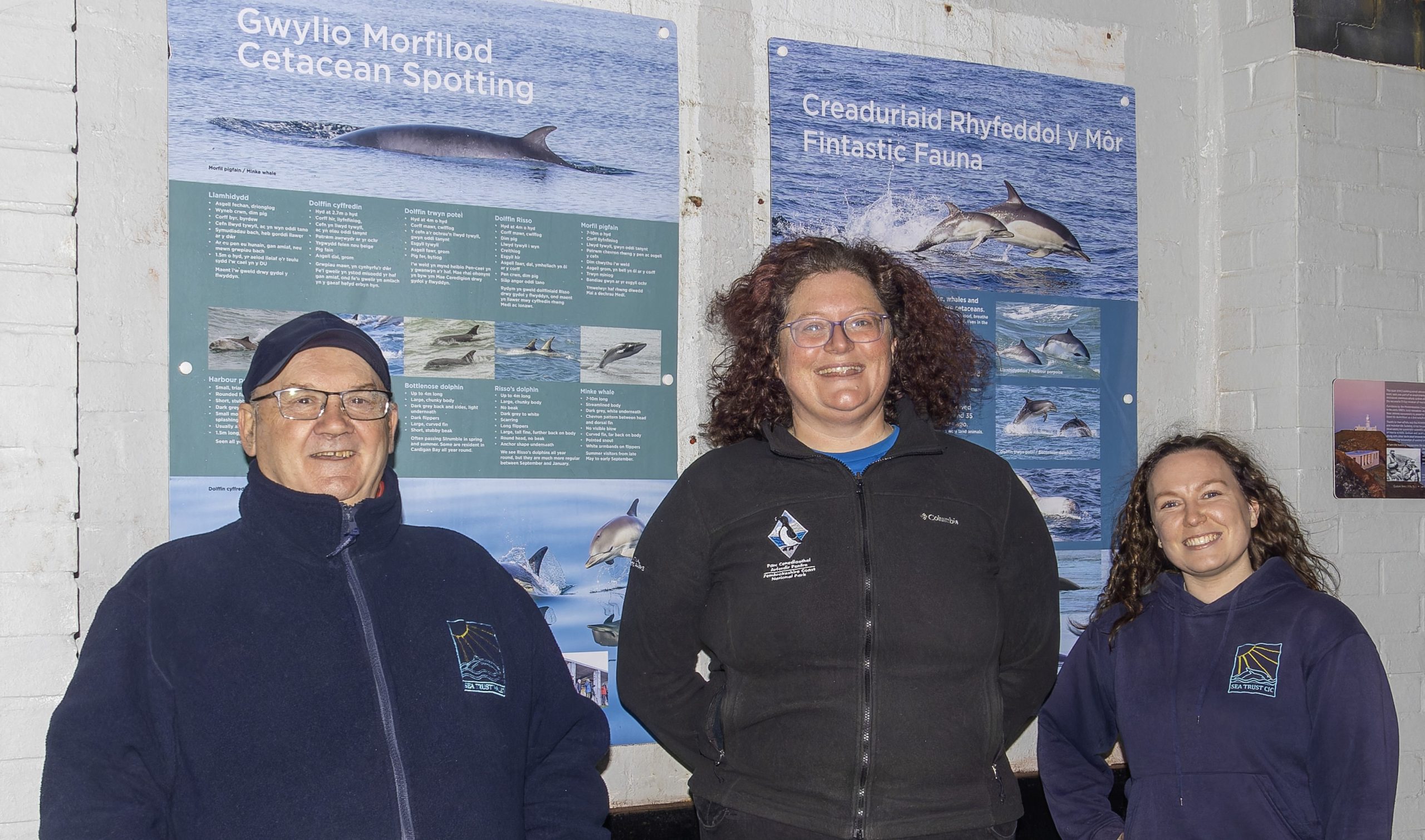Striking new panels go on display at Strumble Head
A set of striking new interpretation panels have recently been installed at Strumble Head.
Strumble Head welcomes thousands of visitors each year, drawn by scenic views of the lighthouse, carpets of sea campion, thrift and heather, and awe-inspiring wildlife.
Perched on the cliff is an old World War Two lookout building, where visitors can now enjoy a set of new interpretation panels, funded by Visit Wales’s Brilliant Basics Fund and providing information about the landscape and wildlife of the area.
National Park Authority Interpretation Officer, Rhowan Alleyne, commented: “When we started to create these displays, we really wanted to help visitors spot the magical sea life at Strumble and recognise what they see. Who better to work with than Sea Trust Wales, who are out monitoring the wildlife here almost every day. I’m so grateful to Holly Dunn and her team of volunteers for sharing their invaluable knowledge.”
Strumble Head is a location used by Sea Trust Wales for their world leading porpoise Photo-ID project, in which volunteers spend several days a week surveying and recording cetacean sightings.
Over 200 porpoises have been identified so far, and the photographic database built up by Sea Trust Wales helps marine scientists to understand how far porpoises travel, and where they feed and breed.
“What makes Strumble Head so special for sea life is the tidal race,” said Sea Trust Wales Manager Holly Dunn, “the strong currents churn up nutrients that feed plankton. Small fish like sand eels feed on the planktons, and sand eels feed many other species, from mackerel, to guillemots, to porpoise, right up to minke whales. Strumble Head is a spectacular feeding ground.”
Sea Trust volunteer Ken Barnett has spent over a decade observing and photographing the wildlife at Strumble Head and said: I’ve met thousands of people during my surveys at Strumble and had a love of passing knowledge on to others, especially young children, who after all will be the caretakers of nature as time moves on.
“As an educational tool, these new interpretation panels are exceptional and complete the Strumble experience for visitors. It’s been an honour to participate in the project and I applaud Pembrokeshire Coast National Park Authority for their provision.”
Once an experimental communications station built in World War Two, Strumble Head lookout was saved from demolition in the 1980s after it was bought by Pembrokeshire Coast National Park Authority, becoming a valuable site for the study of bird migrations and sea life.
The National Park Authority also owns and manages about 10 acres of marine heathland at Strumble Head, which is a rare habitat important for wildflowers, insects, reptiles and birds.
The new interpretation panels give visitors a better understanding of the amazing wealth and variety of wildlife that can be spotted on the cliffs and in the waters around Strumble Head.
Ends
Pictured (left to right) are: Sea Trust Wales photographer Ken Barnett; Pembrokeshire Coast National Park Authority Interpretation Officer, Rhowan Alleyne; and Sea Trust Wales Project Manager Holly Dunn.
